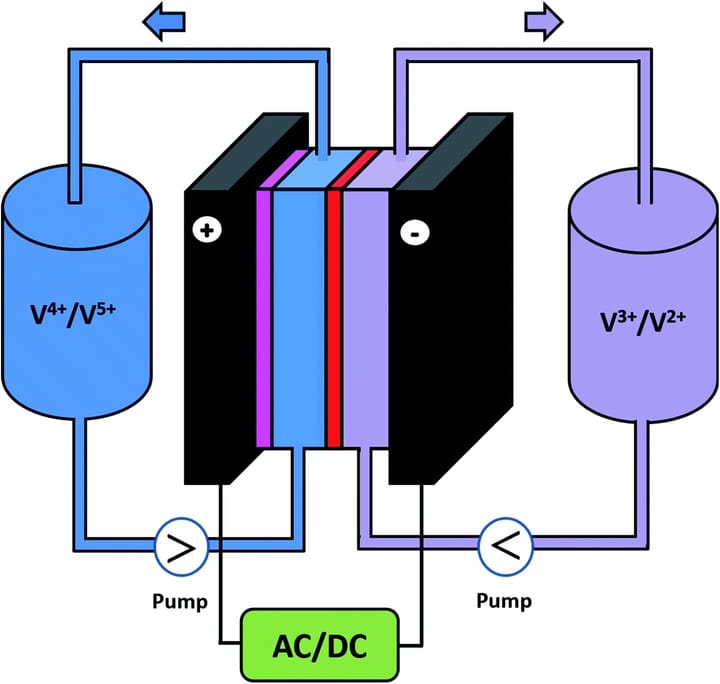Brazil's Green Hydrogen Boom - Can it Fuel a Sustainable Future?

Brazil, a country renowned for its vibrant culture, breathtaking landscapes, and economic dynamism, is on the cusp of a green revolution. As the world grapples with the urgent need to transition to cleaner energy sources, Brazil finds itself in a unique position to become a global leader in green hydrogen production.
A Perfect Storm for Green Hydrogen
Several factors converge to create an ideal environment for green hydrogen in Brazil:
1. Abundant Renewable Energy Resources:
Brazil boasts an impressive renewable energy portfolio. Hydropower currently accounts for a significant portion of its electricity generation, and the country has immense potential for wind and solar power, particularly in its vast northeast region. This abundance of renewable energy is crucial for producing green hydrogen, which relies on electrolysis powered by renewable sources.
2. Growing Domestic Demand:
Brazil's industrial sector, including steelmaking, oil refining, and fertilizer production, is a significant consumer of hydrogen. Traditionally, this hydrogen has been derived from fossil fuels, resulting in substantial carbon emissions. The shift towards green hydrogen presents an opportunity to decarbonize these industries significantly.
3. Government Support and Investment:
Recognizing the transformative potential of green hydrogen, the Brazilian government has outlined ambitious plans to foster its development. The national hydrogen program, launched in 2023, aims to attract billions of dollars in investments and position Brazil as a top exporter of green hydrogen by 2030. Tax incentives, research funding, and regulatory frameworks are being implemented to accelerate the growth of the sector.
Emerging Projects and International Partnerships
Brazil's green hydrogen aspirations are already taking shape with several large-scale projects underway:
- In the state of Ceará, a consortium of European energy giants is developing a massive green hydrogen plant powered by offshore wind farms. This project alone is expected to produce hundreds of thousands of tons of green hydrogen annually.
- The Port of Pecém, also in Ceará, is being transformed into a green hydrogen hub. Investments are pouring in to develop infrastructure for the production, storage, and export of green hydrogen.
- Partnerships with countries like Germany and Japan are fostering technology transfer and knowledge sharing, accelerating Brazil's expertise in green hydrogen production.
Challenges and Opportunities on the Path to Green Hydrogen Dominance
While the future for green hydrogen in Brazil appears bright, several challenges must be addressed:
1. Cost Competitiveness:
Currently, green hydrogen remains more expensive to produce than hydrogen derived from fossil fuels. Achieving cost parity will be crucial for widespread adoption. However, with the declining cost of renewable energy and advancements in electrolysis technologies, green hydrogen is expected to become increasingly competitive in the coming years.
2. Infrastructure Development:
Expanding production is just one piece of the puzzle. Brazil will need to invest heavily in infrastructure for transporting, storing, and distributing green hydrogen. This includes pipelines, storage facilities, and specialized port terminals.
3. Regulatory Framework:
A clear and stable regulatory framework is essential to attract investment and ensure the long-term viability of the green hydrogen sector. The government will need to continue refining regulations and providing a supportive environment for businesses operating in this space.
A Green Future Fueled by Hydrogen?
Brazil's foray into green hydrogen represents a significant opportunity not only for its own economic growth and decarbonization but also for the global energy landscape. By leveraging its abundant renewable resources and fostering innovation, Brazil has the potential to become a major player in the burgeoning global green hydrogen market.
The success of Brazil's green hydrogen ambitions will depend on continued investment, technological advancements, and a supportive policy environment. If the country can overcome these challenges, a greener and more sustainable future powered by hydrogen awaits.


















Comments ()